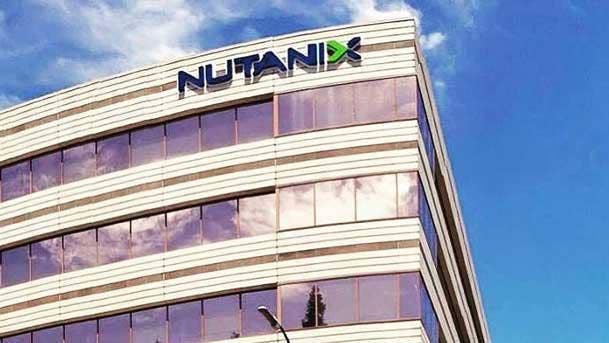Nutanix CEO: Why Hardware Vendors Are Becoming ‘Irrelevant’
‘Hardware companies are scratching their heads on how they’ll help in this public cloud transition -- and they can’t. They become irrelevant,’ says Nutanix CEO Dheeraj Pandey in an interview with CRN.

Pandey On How COVID-19 Is Changing The IT And Business World
Years ago, Nutanix CEO Dheeraj Pandey made the decision to transform into a pure software and subscription-based company, pulling away from all hardware sales. Nutanix’s leader says the coronavirus pandemic is making many IT hardware vendors “irrelevant” as many businesses speed up their digital transformation projects and seek new cloud solutions.
“Hardware companies are scratching their heads on how they’ll help in this public cloud transition -- and they can’t,” said Pandey in an interview with CRN. “They become irrelevant. Hardware companies, especially proprietary hardware companies, are having to think really hard about how they can actually help in this transition to the cloud.”
Last week, the San Jose, Calif.-based hyperconverged and hybrid cloud specialist reported fiscal third quarter software and support sales of $315 million, up 18 percent year over year, while also unveiling that its executive team will take a 10 percent pay cut due to economic uncertainty caused by COVID-19.
In an interview with CRN, Pandey talks about the decision to cut pay for executives and not employees, shifting sales compensation to an annual contract value (ACV) model, and the coronavirus pandemic’s impact on market competition.

Has market competition changed at all over the last couple of weeks and months due to COVID-19?
Yes. The landscape around us has actually changed dramatically over the last two months. One big change that has happened is, hardware companies are scratching their heads on how they’ll help in this public cloud transition -- and they can’t. They become irrelevant. Hardware companies, especially proprietary hardware companies, are having to think really hard about how they can actually help in this transition to the cloud. They have to think really hard about how they can help in the lift and shift to the cloud itself. The fact that we have built our entire company on the architecture of the public cloud is going to lend itself really well for us in this transition.

How can Nutanix take advantage of this market shift during the coronavirus pandemic?
People are saying, ‘I want to try out new things and maybe buy smaller things if that what it takes.’ This is what happens in a recession. VMware took advantage of this in the 2008-2009 time frame. Now it’s our time to take advantage of that. Subscription creates an amazing opportunity for our customers to dip their toes, not just in hyperconverged infrastructure (HCI), but also into all our other products that do not need to commit to three or five year solutions. This is true for not just new products in existing customers, but also HCI in new customers.
Last but not least, end user computing as-a-service is very meaningful because people want to really try this idea of Desktop as-a-Service but they want to do it through a cloud. So [Nutanix] Frame is going to become very important in our discussion as well as Citrix running on top of Nutanix. So we’re going to double down on Citrix on Nutanix and also have discussions on Desktop as-a-Service. So the public cloud and desktops delivered to the public cloud become an important pieces of this puzzle.

Do you think the new remote workforce becomes a permanent fixture post COVID-19?
We feel that there’s going to be a permanent dislocation in overall office environments where the future of work could look very different. Not just work as well. So the future of healthcare could look very different and the future of education could look very different. Case in point, you think of higher education, it will be disrupted after this crisis. It’s like the way the internet was back in the 1990s except that it’s all compressed in two months as opposed to over a decade. Universities have increased their tuition fees by 1,400 percent in the last four decades. The overall instruction, language and the way of imparting education haven’t chance much. So what’s going to happen after this? It’s going to change the way students and parents think about the return on investments on all the college loads. What does remote learning look like? I think telemedicine and healthcare with look very similar – the relationship between the patient and the doctor, and the nurse practitioner and the patient is going to change completely after this once you relax the regulations in healthcare around telemedicine. Similarly, the workplace is going to look very different.
Will Nutanix shift to a remote working company?
We did a survey at Nutanix, many employees actually prefer a commute-free and highly flexible work environment that suits their needs. In many ways it kind of blurs the lines between work and life for them, and they prefer it that way – it’s like the way we hyperconverged compute and storage, the way we are hyper-converging public and private clouds. Our employees want to hyperconverge work and life.

What was the thought process behind implementing a 10% pay cut for Nutanix executives and not employees?
A lot of the executive bench is the high-risk, high-reward professional work. Right now, we are going through a moment of crisis where sacrifices need to start at home. When something begins at home, it begins with leaders, and leaders have to bear the torch. Just like most things in life, we felt like leaders have to basically take this and not have to affect the masses. I think, this is one of those where, it’s the ‘most good’ philosophy. In this case, we felt like in the spirit of the most good, if leaders to do, rather than everybody in the company, than it’s much better for now.

What should the channel know about Nutanix changing sales compensation to support a subscription-based model?
This is basically the subscription journey of the company. Starting in the first half of fiscal year 2021, we will move to either a partial or full ACV (annual contract value) sales comp model. If anything Amazon and Microsoft Azure are ahead of us in many ways. There are many channel partners doing this already. I was talking to the CRO at Sirius [Computer Solutions] the other day, he mentioned that they already moved to ACV-based compensation. So some channel partners are ahead of us. An executive at Wipro told me they’ve had this ACV or TCV (total contract value) between sales reps and SEs for a while as well. The global system integrators have already gone ahead and embraced the subscription, Opex model of selling. Now it’s time for a true hybrid company like Nutanix to also do the same thing.

What’s your advice to channel partners in terms of Nutanix changing the sales comp?
On a renewal, how do we actually get our channel partners to be ever more relevant? For example, how does it trigger value-added professional services for our customers, health checks, migration, moving things out of old systems to new systems, from the private cloud to the public cloud – there’s immense opportunities at the time of subscription renewal for a partner to really go add value. This is where they need to be extremely customer-success hungry because in the world of cloud and subscription, you have to constantly and frequently add value and prove that you are worth it. We are doing it from our own economic point of view and partners will do it from their point of view in truly embracing Net Promote Score, customer success and using the renewal events as an opportunity to add more value.